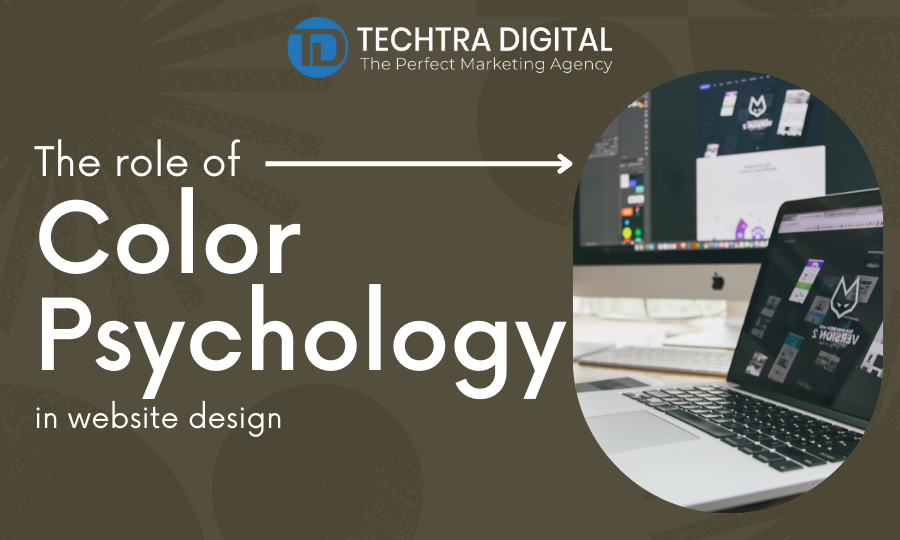Powerful colour. It affects people’s thoughts, feelings, and actions. The psychology of colour may support your brand, boost sales, and even direct website users to particular pages or actions. According to studies, individuals decide whether or not they like a product in 90 seconds or less, with colour accounting for 90% of that judgement. According to research, colour can boost brand recognition by 80%.
An important element in luring and keeping visitors is a website’s aesthetic appeal. Users’ perceptions and interactions with a website are significantly influenced by its design components, particularly colour. A key factor in website design is colour psychology, the study of how colours influence human behaviour and emotions. Understanding colour psychology may aid designers in producing websites that are aesthetically pleasing, engaging, and successful in reaching their objectives.
The psychology of color in web design
It’s no coincidence that several well-known digital companies and social networking sites, like Facebook, Twitter, LinkedIn, and Tumblr, have blue logos. However, it doesn’t follow that blue is a good choice for your website. Even if blue IS the ideal colour for your website, keep in mind the other colours you should employ alongside it (and in what context).
If you know how people are affected by colour, you may use colour in your website design to your advantage rather than a disadvantage.
Let’s look at some colour fundamentals:
The psychology of red
Red is a bold and attention-grabbing colour that can cause users of websites to experience intense emotions and psychological reactions. Aspects of the psychology of red in web design include the following:
- Red is frequently connected with strong feelings like passion, excitement, and energy. For calls to action or e-commerce sites in particular, including red in your web design can assist convey a sense of urgency or enthusiasm.
- Red is one of the most eye-grabbing colours, thus web designers frequently choose it when they want to draw readers’ attention to a certain element or message on the page.
- Red is often connected with danger and caution, which is great for websites that provide information about safety or emergencies.
- Red can also be used to convey assertiveness and authority in specific situations, as well as rage. This suggests that it might not be the ideal option for websites that want to promote a serene or calm environment.
- Depending on the situation, red can have a variety of cultural connotations. For instance, whereas red is frequently connected with wealth and prosperity in some Asian cultures, it is frequently associated with love and passion in Western cultures.
The psychology of Yellow
The color yellow is frequently linked to joy, optimism, and warmth. It is a striking color that can be used to attract attention and arouse enthusiasm. Yellow is a common color option in web design because it can be used to convey a warm and pleasant atmosphere.
The psychology of yellow can be used in web design in the following ways:
- Buttons with a call to action: The colour yellow is frequently used to convey urgency and action. As a result, it might be a good option for call-to-action (CTA) buttons. Whether it’s making a purchase or subscribing to a newsletter, customers might be persuaded to act by using a yellow CTA button.
- Yellow can be a fantastic colour choice for headlines or crucial information that you want to draw visitors’ attention to. It may capture the eye and make words stand out because it is such a vivid and striking colour.
- Yellow is frequently thought of as being amiable and approachable. In website design, may utilised to give off a warm, inviting vibe. For websites that wish to foster a sense of community or promote user interaction, this can be especially beneficial.
- Yellow can be an effective branding colour. It is frequently linked to recognisable brands like McDonald’s, Best Buy, and Nikon. Using yellow in your website design can support your brand and establish a unified visual identity if your brand identity includes it.
The psychology of orange
Orange is a lively and vivacious colour that is frequently linked to pleasure, joy, warmth, ambition, excitement, and enthusiasm. Additionally, it can convey a warning.
Draw attention to any content you want people to notice, such as your call to action (subscribe, buy, or sign up), sales, or clearance. E-commerce, automobile, technology, entertainment, cuisine, and childcare all benefit from it.
Despite being slightly less strong than red, orange may nevertheless easily become overwhelming. Don’t go overboard!
Cool hues like blue, green, and purple are frequently linked to serenity, relaxation, and dependability. They can be used to convey professionalism and a sense of trust, and banks, healthcare organizations, and other companies that must instill trust in their customers frequently employ them.
A clean, minimalist appearance and feel are frequently achieved by using neutral hues like black, white, and grey. Additionally, they can be utilized to highlight significant website features or to create contrast with other colors.
Designers must take into account the positioning and application of color on the website in addition to their choice of hues. While too little color can be dull and unpleasant, too much color can be overwhelming and distracting. The user experience and efficacy of a website can be increased by deliberately using color to draw attention to key parts, establish a visual hierarchy, and lead people through the site.
Finally, color psychology is quite important for website design. Designers may create websites that are functional and aesthetically pleasing by understanding how colors influence human behavior and emotions. Website designers may produce unique and engrossing user experiences by choosing the appropriate colors, combining them wisely, and taking into account their placement and application.




